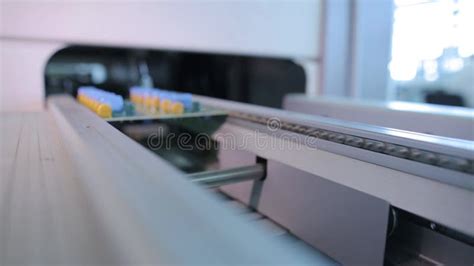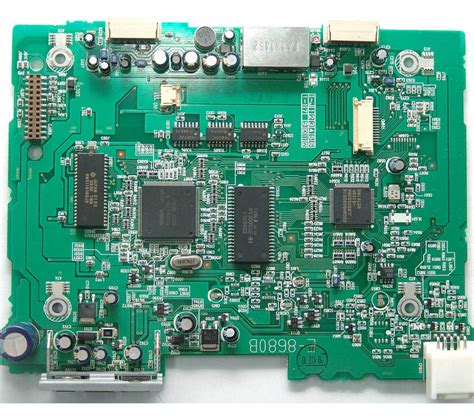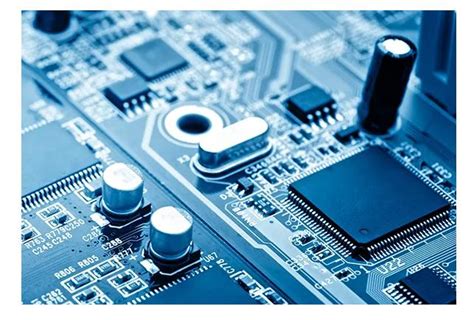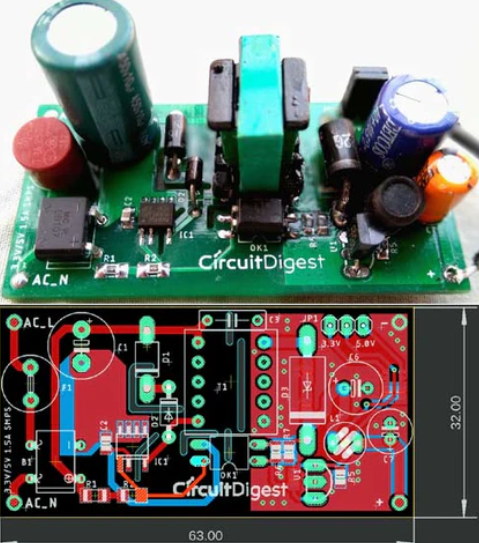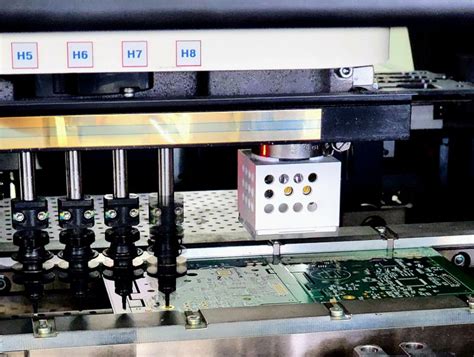Mastering Electronic Circuit Manufacture for Tomorrow’s Innovations
Key Takeaways
In navigating the world of pcb manufacturing, you’ll encounter a landscape that is constantly evolving. Understanding the pcb manufacturing cost is crucial for you, as it directly influences budgeting and project feasibility. As industry demands grow, pcb manufacturing companies are implementing innovative solutions to maintain a competitive edge. For instance, advanced automation and robotics are not only enhancing production efficiency but also decreasing costs, allowing for more rapid turnaround times without sacrificing quality. Furthermore, these companies are increasingly focused on sustainable practices, which contribute to a greener future and appeal to environmentally conscious customers. This intersection of sustainability and efficiency is redefining the pcb manufacturing business model, as firms look to innovate while meeting eco-friendly standards. By staying informed about these developments, you can effectively position yourself to take advantage of emerging opportunities in this dynamic field.
The Evolution of Electronic Circuit Manufacture: A Historical Perspective
The journey of pcb manufacturing has witnessed remarkable transformations, defining how electronic devices are conceived and produced. Initially, the process was labor-intensive, reliant on pcb manufacturing companies that utilized manual techniques to create circuits. Over time, as technology advanced, innovations in material science and digital tools revolutionized the industry. You may note how the introduction of automated processes significantly reduced the pcb manufacturing cost, enabling faster production without compromising quality.
The historical perspective reveals that every innovation built upon previous knowledge; for instance, the shift from single-sided boards to multilayered designs showcased the industry’s adaptability and ongoing pursuit of efficiency. Furthermore, as you delve into this evolution, consider how different pcb manufacturing businesses reacted to market demands and technological advancements—some thrived by embracing automation while others focused on niche markets that required specialized skills or sustainable practices.
To encapsulate this evolution succinctly, here’s a comparison of key milestones in electronic circuit manufacture:
| Year | Milestone | Impact |
|---|---|---|
| 1960s | Manual assembly begins | High labor costs; limited production scale |
| 1980s | Introduction of pick-and-place machines | Enhanced speed in production; reduction in errors |
| 2000s | Rise of multilayer PCB technology | Allowed for more complex circuits in smaller form factors |
| 2020s | Focus on sustainable practices | Shift towards greener production methods |
The importance of adapting to these changes cannot be overstated; they pave the way for future innovations in pcb manufacturing that continually enhance both efficiency and sustainability. Exploring this historical perspective can provide invaluable insights into the current landscape and future possibilities within this ever-evolving field. For more information on advanced techniques in pcb manufacturing, you might find resources from Andwin PCB helpful.
Cutting-Edge Techniques in Circuit Design and Assembly
In the realm of pcb manufacturing, advancements in circuit design and assembly are becoming increasingly essential for ensuring efficiency, quality, and adaptability. One of the most significant trends you’ll notice is the shift toward using advanced simulation software, which allows designers to model circuit performance before physical prototypes are built. This not only streamlines the pcb manufacturing process but also minimizes costs associated with trial-and-error methods. Companies that specialize in pcb manufacturing are embracing techniques such as multi-layered PCB designs, which enable more complex functions without increasing the board’s physical size.
Moreover, automation plays a critical role in enhancing assembly precision. By integrating automated pick-and-place machines, you can achieve unprecedented accuracy in component placement, reducing human error and improving consistency across batches. As you explore different pcb manufacturing companies, it’s worth considering how their integration of these cutting-edge techniques impacts not just the pcb manufacturing cost, but also the overall quality of their products.
“Investing in technology is investing in your product’s future.”
In addition to these innovations, sustainable practices are gaining traction within the industry. Efforts to reduce waste through efficient material use and recycling initiatives are becoming essential features that you should look for when evaluating pcb manufacturing businesses. Through these practices, you can ensure your circuits not only meet current standards but also contribute positively to environmental efforts.
As you delve deeper into this transformative landscape of electronic circuit manufacture, keep an eye on how emerging techniques will shape both your understanding of traditional practices and pave the way for innovative solutions tailored to meet evolving technological demands.
Sustainability in Electronic Manufacturing: Practices for a Greener Future
As the world increasingly recognizes the importance of sustainable practices, the realm of pcb manufacturing is undergoing a transformative shift. You may find that many pcb manufacturing companies are adopting eco-friendly materials and processes to reduce their environmental impact. This transition not only addresses ecological concerns but also enhances your business’s appeal to environmentally-conscious consumers. By focusing on sustainable sourcing, recycling initiatives, and energy-efficient manufacturing techniques, companies can significantly lower their pcb manufacturing cost while contributing positively to the planet. Incorporating these practices into your pcb manufacturing business strategy can pave the way for greater innovation and resource management. You might consider how investing in cleaner technologies will not only benefit your operational costs but also foster a responsible corporate image that resonates with today’s market demands. Embracing sustainability helps shape a greener future and positions you ahead of competitors in this rapidly evolving industry.
The Impact of Automation on Production Efficiency
In the realm of pcb manufacturing, automation plays a transformative role in enhancing production efficiency. By integrating advanced technologies, companies can streamline their processes, significantly reducing both time and pcb manufacturing cost. Automation introduces precision that is often unattainable through manual labor, leading to higher quality products. For you as someone interested in the pcb manufacturing business, understanding these efficiencies is crucial. With the rise of smart factories, pcb manufacturing companies are increasingly adopting automated systems to minimize errors and optimize resource usage. These systems not only speed up assembly lines but also enable real-time monitoring of production workflows, effectively reducing downtime and waste in materials. Emphasizing automation can open up new opportunities for innovation, making it essential for those involved in this field to stay abreast of these advancements. As you explore options in pcb manufacturing, consider how these automated processes could provide a competitive edge in today’s fast-paced technological landscape, ultimately shaping the future of circuit production efficiency.
Innovations Driving the Future of PCB Technology
The landscape of PCB manufacturing is rapidly evolving, driven by technological advancements that enhance both efficiency and functionality. As you delve into the world of pcb manufacturing companies, it’s essential to understand how these innovations are reshaping the industry. The integration of smart technologies and data analytics into the pcb manufacturing business is paving the way for increased customization and agility in production processes. This means that you can now expect lower pcb manufacturing costs, as companies leverage these advancements to minimize waste and optimize resource allocation. Additionally, developments such as automated routing and advanced 3D modeling tools are revolutionizing circuit design, ensuring that your products not only meet current standards but also anticipate future market demands. As sustainable practices gain traction, many pcb manufacturing companies are also focusing on eco-friendly materials and processes, contributing to a greener footprint in electronic production. Embracing these innovations can significantly enhance your competitive edge in an ever-changing technological landscape.
Challenges and Opportunities in Circuit Manufacture
The realm of pcb manufacturing is rife with both challenges and opportunities that can significantly influence your success in the industry. As you navigate the complex landscape of pcb manufacturing companies, you will likely encounter hurdles such as fluctuating pcb manufacturing costs and the demand for advanced technologies. However, these obstacles also open avenues for innovation and improvement. For instance, as you strive to optimize your pcb manufacturing business, embracing lean manufacturing principles can greatly enhance efficiency while reducing waste. You might also consider investing in automated solutions, which can streamline processes and improve precision, thereby addressing one of the key challenges: scalability. Moreover, adopting sustainable practices not only supports environmental responsibility but can also serve as a competitive advantage in a market that increasingly values green alternatives. By focusing on collaboration with other sectors—like technology and materials science—you can leverage collective expertise to overcome these challenges and harness the vast opportunities available in the pcb manufacturing landscape, ultimately paving the way for future innovations that will shape our technological landscape.
Collaboration Across Industries to Enhance Circuit Solutions
In the evolving landscape of pcb manufacturing, collaboration across various industries is pivotal for enhancing circuit solutions. By working together, pcb manufacturing companies can leverage expertise from different sectors, ranging from telecommunications to automotive, thereby fostering innovation. This interconnectedness allows for the integration of advanced technologies and methods, which can significantly reduce pcb manufacturing cost. For instance, sharing resources and knowledge between software developers and hardware manufacturers can lead to the creation of more efficient design tools, advancing the overall quality and performance of electronic circuits. Moreover, as you explore partnerships with diverse stakeholders, you will discover opportunities to enhance supply chain management and streamline production processes in your pcb manufacturing business. The synergistic approach not only drives down costs but also cultivates a culture of continuous improvement and creativity within the industry. Embracing these collaborations will ultimately empower you to stay ahead in a competitive market while addressing the ever-growing demands for innovative electronic solutions.
The Role of Testing and Quality Control in Electronic Production
In the realm of pcb manufacturing, effective testing and quality control are paramount to ensuring reliability, performance, and safety. As you delve into the intricate world of pcb manufacturing companies, you will discover that rigorous quality assurance processes are often the backbone of successful circuit production. Testing can encompass a range of methodologies, from functional tests to stress tests, which evaluate how well the circuits perform under varying conditions. By prioritizing these evaluations, you not only reduce the risk of defects but also optimize the overall pcb manufacturing cost by preventing costly recalls and reworks. Moreover, effective quality control fosters customer confidence, encouraging a vibrant pcb manufacturing business that thrives on reputation and trust. Emphasizing a culture of quality within your operations demonstrates your commitment to excellence, essential for harnessing innovative practices that push technological boundaries forward. In this fast-paced industry, where failures can lead to significant setbacks, maintaining stringent testing protocols will position you as a leader in sustainable and cutting-edge electronic production.
Conclusion
In the realm of pcb manufacturing, the journey towards tomorrow’s innovations is both exciting and intricate. By understanding the significant advancements and ongoing trends in pcb manufacturing companies, you can better appreciate the landscape of this ever-evolving industry. As you delve into topics such as pcb manufacturing cost and explore various business models, you’ll realize the importance of innovation in reducing costs while enhancing efficiency. The modern pcb manufacturing business must embrace cutting-edge techniques that not only boost productivity but also emphasize sustainability and environmental responsibility. Staying abreast of these developments positions you at the forefront of a transformative movement, where technological prowess meets ethical considerations. As you navigate through these changes, recognize that your role is crucial in driving forward-thinking solutions that prioritize both performance and sustainability in electronic circuit manufacture. The future holds immense possibilities, and understanding these dynamics will empower you to contribute meaningfully to a greener, more innovative electronic landscape.
FAQs
What are the main factors affecting the pcb manufacturing cost?
Several factors influence your pcb manufacturing cost, including the complexity of your design, materials used, production volume, and the lead time required. Companies often find that optimizing their designs and selecting suitable materials can significantly reduce expenses.
How can I choose between different pcb manufacturing companies?
When selecting among various pcb manufacturing companies, consider aspects such as their reputation, technology capabilities, production capacity, and customer service. It’s beneficial to request samples or quotes and evaluate turnaround times to ensure they meet your needs.
What innovations are currently shaping the pcb manufacturing business?
The pcb manufacturing business is heavily influenced by advancements in automation, AI-driven processes, and sustainable practices. These innovations enhance efficiency and reduce costs while maintaining high-quality standards in production.
How does sustainability affect my choices in PCB production?
Sustainability plays a crucial role in modern pcb manufacturing, as many manufacturers are adopting greener practices. By choosing companies that prioritize eco-friendly methods, you can contribute to reducing waste, conserving resources, and lowering your overall environmental footprint.

